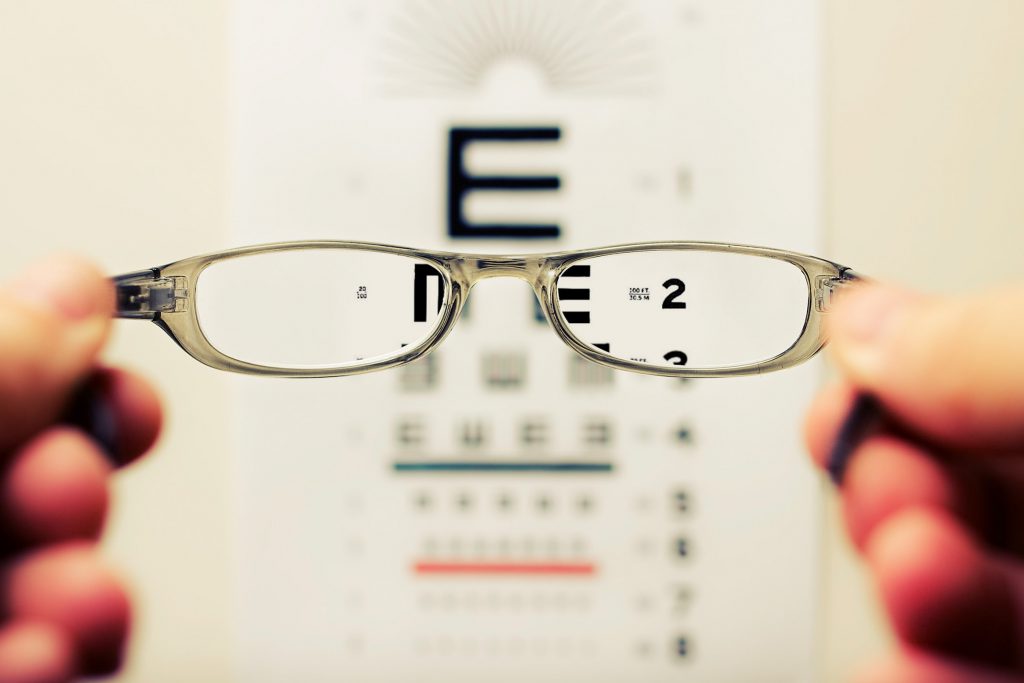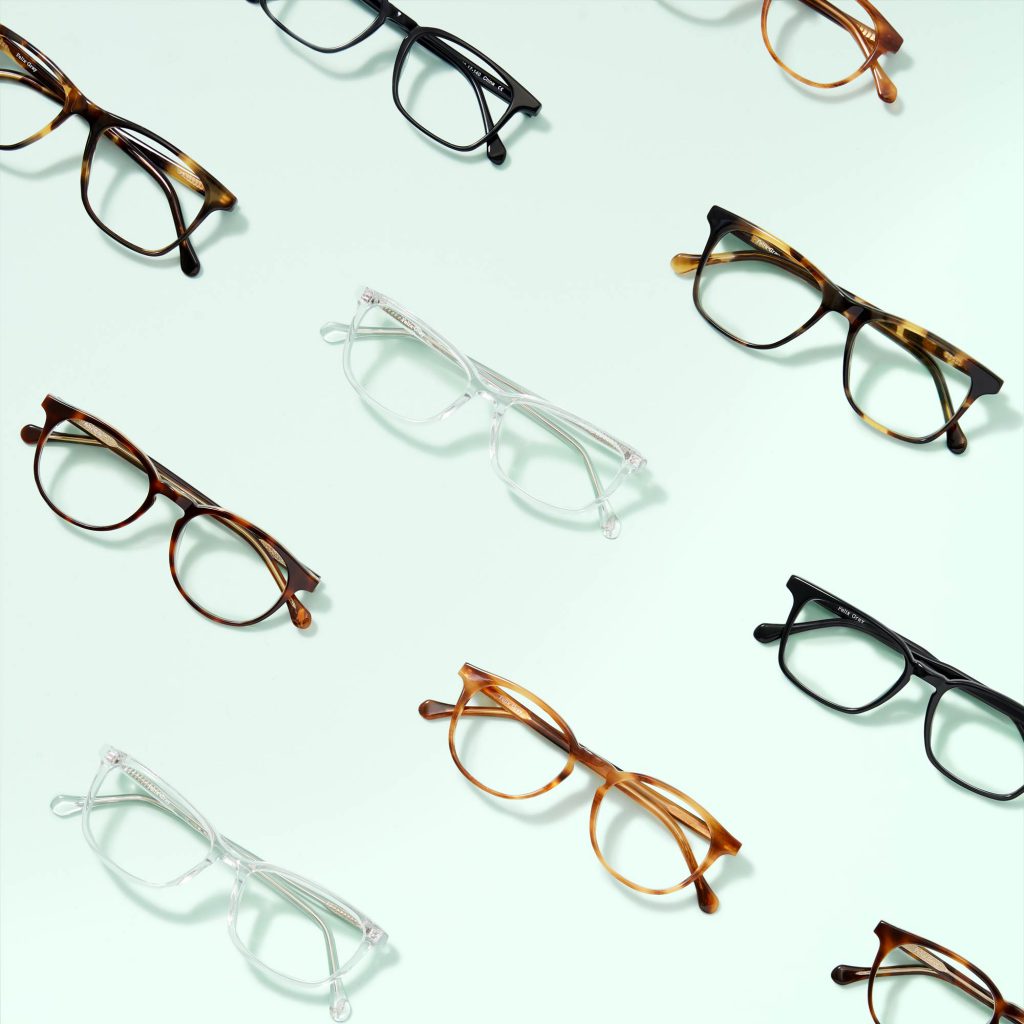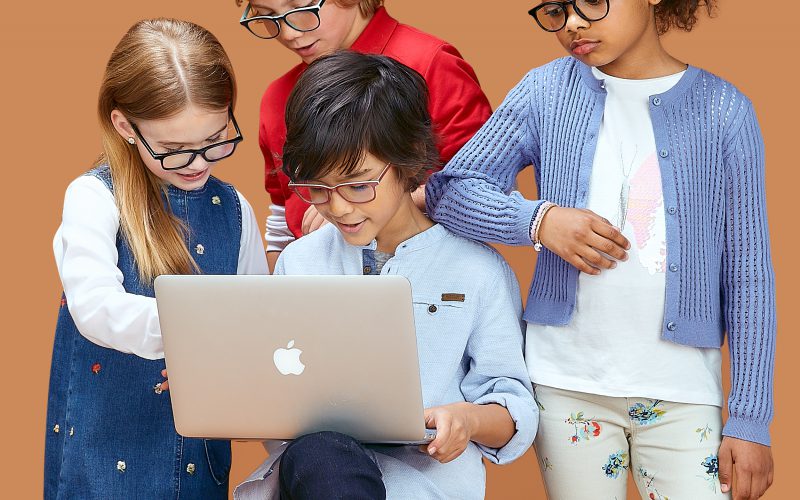You’ve probably seen one of the viral videos of a little kid seeing the world clearly for the first time, thanks to a much-needed pair of glasses. It’s adorable and heartwarming to see the joy as they take in their mom’s face fully, or walk down the hallway without leaning on the walls, or reach out to touch their favorite stuffie with a look of total wonder.
But how do these parents that their kids need glasses? What are the signs your child needs an eye screening in the first place?
Signs your kid needs glasses
It’s pretty clear you need to take your child to the eye doctor if they complain about things being blurry, or that they can’t see specific things, like words in a story you’re reading. Or, they might complain about eye pain or eye fatigue.
However, your child’s vision is the only view they have ever had, so they might not say anything at all. They don’t know if they don’t have optimal vision!
You should be on the lookout for these physical signs your kid might need a vision screening:
Young children might show these signs:
- Crossed eyes: When your child starts staring off into the distance like they’re tired, do you notice one eye moving slightly to one side? Before their next nap or bedtime, try a game of peek-a-boo, or have a chat about their favorite imaginary animal. Watch their eyes closely. Is one eye focusing on you better than the other? Head on in to the pediatric optometrist.
- Getting extremely close to screens: When you allow them to watch TV or use a tablet, are they getting their faces within inches of the screen? Your child may be unable to see it clearly. Also, they could benefit from wearing blue light glasses.
- Tilting head: This is an instinctive response. Your child may do this when they are trying to get one eye closer to what they are struggling to see.
- Staring at lights, or light sensitivity: Does your little one react strongly to sudden brightness? Are they very attracted to light? If their eyes are not focusing properly, their eye cannot filter light properly. They may need glasses.
- Squinting: Many children who struggle with myopia (or nearsightedness, the ability to see up close but not far away) will squint when they look at the board at school or the TV at home. If they are squinting at screens or books closer to their face, they might be struggling with hyperopia (or farsightedness, the ability to see far away but not up close).
- Excessive eye rubbing: Eye fatigue is a sign of vision problems. Your child might need glasses if you notice them rubbing their eyes when they are not tired, or when they have been doing a visual task for a while.
- Excessive tear production: Your child may need glasses if they are producing a lot of tears in situations where they aren’t sad.
In school age children, you might see:
Students who are unable to read the board are unable to focus. Children might not always tell their teacher or parent that they can’t see; if they are clowning around in class, struggling to pay attention, or taking out their phone too much, this may be a sign that their vision problems are impacting their learning.
In the younger grades, students may be unable to track words. Dr. Sara Johnson suggests that both losing place while reading and using a finger to read could be a sign of developing vision problems.
When should kids get an eye exam?

It might seem like an eye exam is impossible before a child can read, but it’s not! Pediatric charts have shapes or pictures on them. If your child is too young to talk, the optometrist can check for eye conditions and determine a prescription by watching the way your child’s eyes focus through a series of lenses, held up in front of your little one’s face.
If you’re concerned about your kiddo being able to keep still while the phoropter is swung in front of their face, don’t worry! If your child is nervous, the exam can happen while he or she is on your lap.
Suggested screening schedule
Eyes change when hormones change! That’s why moms sometimes notice vision changes during and after pregnancy, it’s why so many kids get glasses in middle school, and it’s why kids need regular screenings, too. The American Academy of Opthamology recommends that children be screened on the following schedule:
Eye Exams Between 6 & 12 Months
Screen for the “red reflex” and for pupil & blink responses.
Eye Exams Between 12 & 36 Months
Children should be screened for strabismus, or crossed eyes, a condition where your which can lead to amblyopia, or lazy eye. You may notice this at home as crossed or misaligned eyes, especially when your child is tired. This can be corrected with as little as an hour a day in a fun eye patch.
Eye Exams Between 3 & 5 Years Old
Between the ages of 3 and 5, children need an eye exam with a chart. Don’t worry if your kiddo doesn’t read letters yet! The pediatric charts have shapes on them. At this age, amblyopia can still be treated reasonably effectively.
Eye Exams for Ages 5 & Older
After age 5, kids should get yearly screenings. Once you have an existing prescription, try out our online exam!
Reasons to screen your young child’s eyes
From birth to age 8, a child’s visual system is growing and changing rapidly. An early correction can prevent long term issues with visual acuity.
If misaligned eyes, strabismus (crossed eyes), or refractive errors like myopia (nearsightedness) or hyperopia (farsightedness) are not corrected while the child is young, their ability to focus may be impaired later. It is essential for the developing brain to have good visual data. If one eye is giving clear vision and the other isn’t, the brain will start to rely on the better seeing eye more than the other, and connections to the weaker eye develop. This causes amblyopia, or lazy eye.
If you have any concerns about vision problems in your child, take them to a pediatric eye care provider! Even before a child can speak, a good pediatric optometrist can look at how a child’s eyes focus and prescribe glasses.
As your child grows in school, their learning process may be impacted.
What is the most common age for kids to need glasses?
The most common age for kids to start wearing glasses is between 6-12 years old.
Benefits of getting your kid prescription glasses
More and more kids have poor vision due to an increase in near-eye work. Getting your child an eye exam early can help you prevent further vision problems due to eye strain and close up work.
Taking an online vision test

Your child’s first exam should be in an office with an optometrist. But, once they have been seen and have an existing prescription, you can skip the line and the busy signal to take the test online.
If you choose to renew your prescription with our online vision test your will get a 10% discount on your next Rx order at checkout.
How to Choose Frames for Kids’ Glasses

You can think about glasses frames as a spectrum from angular to rounded. The most angular glasses are rectangular or square, and then there’s cateye and browline glasses, and then on the other end, we have oval and circular frames.
As a general rule, round and heart shaped faces tend to look better with angular glasses, while square and triangular faces tend to look better with more circular frames. A little bit of contrast between one’s face shape and the shape and size of the frame is often more visually interesting.
Don’t believe me? Upload a picture and play around with our virtual try-on tool!
How to Choose Lenses for Kids’ Glasses
Kids’ prescription glasses should have polycarbonate lenses. They are the most impact resistant and safe lens option for children. Anti-reflective and scratch-resistant coatings are also a must for kids, who will wear their glasses hard. We offer 100% UVA/UVB protection and grade A ophthalmic quality lenses so you don’t have to worry about the quality of your child’s prescribed glasses.
How to get Kids to wear glasses & Other Common Issues
Let’s say your child needs glasses, but always take them off. What do you do?
- Try letting them have multiple pairs. That way, instead of telling your kid to put their glasses on, you can offer them a choice: “which glasses do you want to wear today?”
- In younger children, it can help if a parent wears glasses, too. Grab yourself a pair of blue light filtering glasses! (You’ll be glad you did when you notice less eye strain.)
- Sometimes a sports strap at the back will help keep them on and be a little reminder not to take them off.
Other common issues:
- If your kid’s glasses are falling off their nose, grab some nerdwax to make them stick on there. You can also try out a pair of kid-friendly glasses chains or sports straps, but the nerdwax is way more fun.
- If the temples are too tight, try running the bridge under hot water and gently bend it open. Be gentle, steady, and firm, or you will break them.
- Managing screen time and blue light: you are probably already limiting screen time for your children, but adding a little blue light protection to reduce eye strain and fatigue can’t hurt!
How wearing kid glasses affects sports & activities
Most optometrists will say that prescription swim goggles are helpful, albeit unnecessary. But if your child’s vision impairs their ability to play games in the pool or find those pool weights the kids are always throwing around, prescription swim goggles are less expensive than you think! Also, they will keep your kid from wearing glasses in the pool, where it would be very difficult to find a lost lens.
Sports goggles, however, are very important. While the polycarbonate lenses in your child’s everyday glasses are scratch and shard resistant for everyday use, sports goggles are designed to protect your child’s eyes even further. They are also designed to stay on through movement, so your kid can be fully present for every play!
How much are kid’s glasses & handling insurance
Glasses can be a huge expense. At Felix Gray, we’re committed to providing a high quality vision solution without the markups you’ll find at an optician. Vision insurance is rarely as comprehensive as medical coverage, often only providing a minor discount, making in-store purchases still more expensive than our online options.
In most cases, our prescription glasses are eligible for reimbursement through your FSA or HSA.
How to buy prescription kids glasses from Felix Gray
- Choose your frame
- Choose your size
- Add to cart
- Select lens material: polycarbonate or a high-index acetate
- At checkout, you can upload a file with your kid’s prescription, or have Felix Gray contact your eye doctor for you!
- If you enter your own prescription, don’t forget to ask the prescribing optometrist or optician to measure your kid’s pupillary distance, or PD. You need this number in order to center the prescription in the lenses properly.
